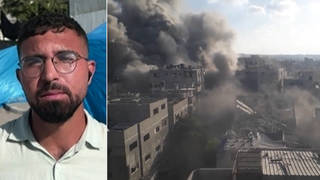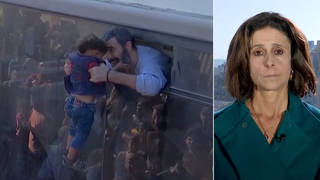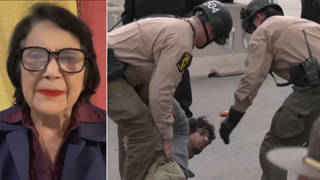
Topics
Richard Lloyd Parry wrote in last week’s Independent from Kama Ado, Afghanistan:
“THE VILLAGE where nothing happened is reached by a steep climb at the end of a rattling three-hour drive along a stony road. Until nothing happened here, early on the morning of Saturday and again the following day, it was a large village with a small graveyard, but now that has been reversed. The cemetery on the hill contains 40 freshly dug graves, unmarked and identical. And the village of Kama Ado has ceased to exist.
“Many of the homes here are just deep conical craters in the earth. The rest are cracked open, split like crushed cardboard boxes. At the moment when nothing happened, the villagers of Kama Ado were taking their early morning meal,before sunrise and the beginning of the Ramadan fast. And there in the rubble, dented and ripped, are tokens of the simple daily lives they led. A contorted tin kettle, turned almost inside out by the blast; a collection of charred cooking pots; and the fragments of an old-fashioned pedal-operated sewing machine. A split metal chest contains scraps of children’s clothes in cheap bright nylon.
“In another room are the only riches that these people had, six dead cows lying higgledy-piggledy and distended by decay. And all this is very strange because, on Saturday morning–when American B-52s unloaded dozen of bombs that killed 115 men, women and children–nothing happened.
“We know this because the US Department of Defense told us so. That evening, a Pentagon spokesman, questioned about reports of civilian casualties in eastern Afghanistan, explained that they were not true, because the US is meticulous in selecting only military targets associated with Osama bin Laden’s al-Qa’ida network. Subsequent Pentagon utterances on the subject have wobbled somewhat, but there has been no retraction of that initial decisive statement: 'It just didn't happen.’”And that was only one bombing run, on one day. With the Pentagon claims and the mainstream media blackout here in the U.S., it has been extremely difficult to get a picture of just how many civilians the U.S. has killed.
One professor has done something about it. Since the bombing started on October 7, a professor at the University of New Hampshire has scoured news wires and major newspapers from all over the world, combined this information with first hand accounts, and has just put it all together into a single report. Professor Marc Herold is releasing his findings today in a Democracy Now! in Exile exclusive. Since October 7, over 3,500 civilians have been killed in Afghanistan by U.S. bombs.
Guest:
- Marc Herold, Professor of Economics, International Relations, and Women’s Studies at the University of NewHampshire.
Related links:
- Democracy Now!
- Professor Marc Herold’s Findings in Microsoft Excelformat











Media Options